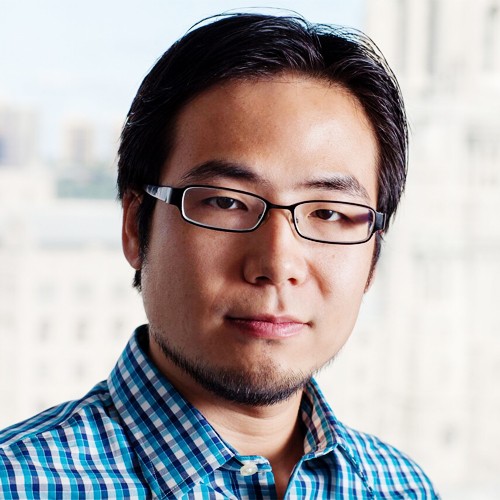Fred Jiang | Building Systems to Collect, Exchange, and Analyze Data

Smart buildings factor in the temperature outdoors and flow of people indoors to optimize energy use. But what if people were in the loop, tracking their energy use and adjusting their behavior for added savings?
“We waste more energy in commercial buildings than at home because we’re not accountable,” said Xiaofan “Fred” Jiang, an assistant professor of electrical engineering at Columbia Engineering and a member of the Data Science Institute.
Think Fitbit meets Nest as possibly the next frontier in green building technology. Individuals monitor their energy use on their mobile phones and get personalized feedback on where to cut back. Standing in the way, however, is a method for tracking individuals indoors with greater precision than Apple’s iBeacon or other Bluetooth and WiFi-based services.
Jiang is working on alternative ways to track people within buildings. Since coming to Columbia in July, he has experimented with a combination of techniques for associating people with specific offices and matching that information with real-time energy use.
The term Internet of Things (IoT) to describe a network of devices in conversation with each other had yet to be coined when Jiang left for college in 2001, at UC Berkeley. But as someone who grew up coding and making things, he intuitively set out on a career path to create intelligent and connected systems.
For his PhD thesis, he designed a network of sensors to measure and feedback to users real-time energy use in Berkeley’s computer science building. As Jiang explains it: “Someone at the other end of the Earth could talk to the sensors on the HVAC of the computer science building using standard networking tools.” ACme, as the system was called, visualized energy use for users and offered suggestions for saving energy. The building saw a sharp drop in energy use, though after several weeks users began to return to their old habits.
The results were compelling enough that Lawrence Berkeley National Laboratory and several companies put ACme into their own buildings. After graduating, Jiang returned to his native China, which he had left at age 13, to join Microsoft Research Asia. Based in Beijing, he worked on indoor location and mobile fitness, among other wireless and mobile projects.
Branching into wearable technology, he helped develop sensor-enabled earphones that measure heart rate and feed the information to a user’s smartphone. The phone then recommends music to match the intensity of his or her workout. One surprise that came out of the research was the discovery that music alone could make the heart beat faster, nudging the body to burn more calories. “It’s like exercising without moving a muscle,” he said.
In 2012, Jiang was tapped to lead Intel’s new IoT research lab in Beijing. On the drive to work one day, he had an idea. What if he could measure Beijing’s smog problem at a citywide scale?
With a team of Intel researchers, he built a system of low-cost sensors and distributed them throughout central Beijing. To compensate for the lower quality data, they built a model that pulled in additional environmental information, such as temperature, humidity, and the topography at each sensor location, to improve the data’s accuracy. Finished in less than a year, the AirCloud project was one of the first to provide an independent, real-time assessment of particulate pollution levels in Beijing.
This fall, Jiang launched Columbia’s first undergraduate IoT course: “Intelligent and Connected Systems.” The class focuses on the hardware, embedded software, and cloud computing that allow sensors and devices to collect, exchange, and analyze data.
In the lab, Jiang continues to experiment with wearable technologies. In addition to his work on smart buildings, he is working on earphones that can sense and detect dangers such as an approaching car or bicycle, and warn users.
Jiang serves on several technical and organizing committees, including ACM SenSys, ACM/IEEE IPSN, and ACM BuildSys. He was a National Science Foundation (NSF) Graduate Fellow and a Vodafone-U.S. Foundation Graduate Fellow.
BS, (2004) MS, and PhD (2010), UC Berkeley